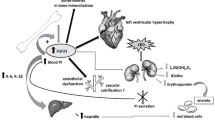Transforming growth factor beta-1 (TGF-β1) is secreted in a biologically inactive form and stored in the extracellular matrix as a 290 kDa complex consisting of the mature TGF-βl homodimer (Mr 25 kDa), the latency-associated peptide (LAP; Mr 75 kDa), and the latent TGF-βl binding protein-1 (LTBP1; Mr 190 kDa). Latent TGF-βl, composed of these three components, is known as the "large latent TGF-βl complex." In contrast, latent TGF-βl without LTBP1 is known as "small latent TGF-β1." For all latent forms, dissociation of the TGF-βl homodimer from LAP is necessary for growth factor activation and acquisition of biological activity. Matrix vesicles produced by growth plate chondrocytes contain matrix metalloproteinases that can activate small latent TGF-βl. The enzyme responsible for this is matrix metalloproteinase-3 (MMP-3), although matrix vesicles also contain MMP-2 and plasminogen activator. The present study tested the hypothesis that matrix vesicle enzymes are also involved in the release of the large latent TGF-βl complex stored in the extracellular matrix. Matrix vesicles were isolated from cultures of resting zone and growth zone chondrocytes and metalloproteinases present in the matrix vesicles extracted with guanidine-HCl. Chondrocyte extracellular matrices were prepared by lysing confluent cultures and removing the lysed cells. The matrices were incubated with matrix vesicle extracts and the release of total and active TGF-β1 was determined. To determine if MMP-2 or MMP-3 was involved in the release, matrix vesicle extracts were preincubated with anti-MMP-2 antibody or anti-MMP-3 antibody to selectively deplete the enzyme activity. Matrices were also treated with rhMMP-2 or rhMMP-3. To determine the identity of the released protein(s), digests were separated on SDS-polyacrylamide gels and Western blotting analysis was performed using a specific antibody to LTBP1. Matrix vesicle extracts released both active and total (=latent + active) TGF-β1 in a time-dependent manner, with peak release after 1 hour of incubation. The amount of total TGF-β1 released was 10 times higher than the release of active TGF-βl. The effect of the matrix vesicle extracts was dose-dependent; in addition, the amount and ratio of active to total TGF-b1 released was very similar, irrespective of the source of matrix or matrix vesicle extracts. Pre-incubation of matrix vesicle extracts with anti-MMP-3 antibody blocked the release of active and total TGF-β1, whereas pre-incubation with pre-immune IgG or anti-MMP-2 antibody had no effect. The addition of rhMMP-3, but not rhMMP-2, caused a dose-dependent increase in the release of total, but not active, TGF-β1. Western analysis confirmed that both matrix vesicle extracts and rhMMP-3 released the large latent TGF-β1 complex from the matrix. In addition to the expected 290, 230, and 190 kDa bands, samples run without reduction also contained proteins of molecular weights 110 and 50 kDa that reacted with the anti-LTBPl antibody. When these same samples were electrophoresed after reduction, the high molecular weight immunoreactive bands disappeared and three bands of molecular weight 75, 32, and 25 kDa were observed. These results indicate that matrix vesicles contain enzymes, especially MMP-3, which are responsible for the release of TGF-β1 from the matrix, most of which is in latent form. Further, the data suggest that release of the large complex occurs via cleavage at several novel sites in the 130 kDa LTBP1 molecule. Since matrix vesicle MMP-3 is also able to activate small latent TGF-β1, these results suggest that the large latent TGF-β1 complex protects against activation of the small latent TGF-β1. Thus, the data suggest that release of the large latent TGF-bl complex from the matrix and activation of the latent growth factor are only two steps of what must be at least a three-step process.
Similar content being viewed by others
Author information
Authors and Affiliations
Rights and permissions
About this article
Cite this article
Maeda, S., Dean, D., Gomez, R. et al. The First Stage of Transforming Growth Factor β1 Activation is Release of the Large Latent Complex from the Extracellular Matrix of Growth Plate Chondrocytes by Matrix Vesicle Stromelysin-1 (MMP-3). Calcif Tissue Int 70, 54–65 (2002). https://doi.org/10.1007/s002230010032
Received:
Accepted:
Issue Date:
DOI: https://doi.org/10.1007/s002230010032




